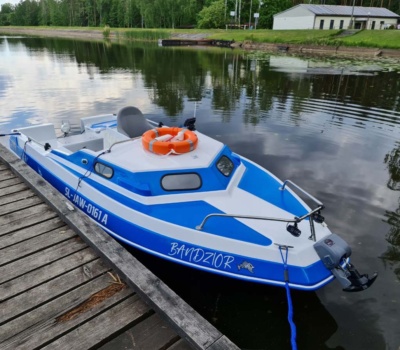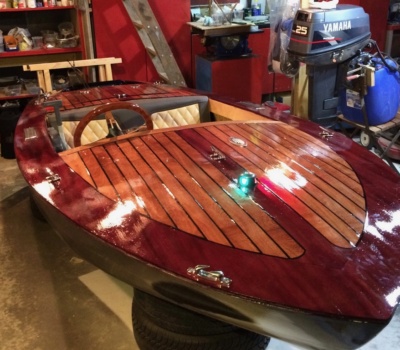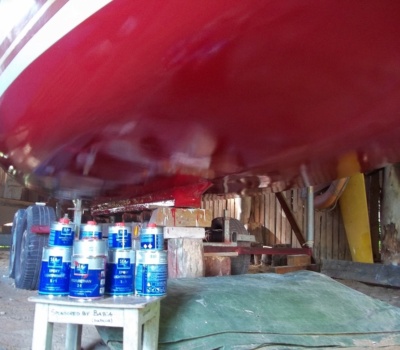Październik 2015, tekst oraz zdjęcia Piotr6 (www.sailforum.pl). „Antyfouling Sea-Line użyłem dwa sezony temu (w 2014r.). Przed rozpoczęciem sezonu 2015 drewniany ster „świeżo zabezpieczony” naturalnym lakierem olejnym Le Tenkinios pomalowałem farbą przeciwporostową (antyfouling) Sea-Line (w dwóch warstwach).
Antyfouling – dokładniej reszta farby znalazła swoje miejsce na kadłubie i ku mojemu zdziwieniu nie znalazłem różnicy w jakości zabezpieczenia przeciwporostowego w porównaniu do tego wykonanego rok wcześniej. Podobnie zdziwiony był bosman na co dzień slipujący jachty w mojej marinie. Stwierdził, że mnóstwo jachtów jest oblepionych muszlami, a na moim Ka-Haar nie znal nic. Przygotowując się do zimowania umyłem cały jacht, stąd widoczne są na zdjęciach białe zacieki, pozostałości środka do czyszczenia żelkotu.

Antyfouling Sea-Line kontra porastanie na Zalewie Szczecińskim wynik 2:0.
Trzecia runda „Antyfouling Sea-Line kontra porastanie na Zalewie Szczecińskim” już za kilka miesięcy. Mój plan zimowych prac remontowych przy dnie to antyfouling czyli zabezpieczenie farbą przeciwporostową niewielkich uszkodzeń mechanicznych z dna oraz steru (max 10 cm2). Zimowe wieczory, zamiast pracować ciężko przy odnowie powierzchni przeciwporostowej z (antyfouling u), poświęcę na wspomnienia z tegorocznych rejsów.”
Poniżej linii wody stosujemy Antyfouling Sea-Line, czyli farbę przeciwporostową zabezpieczającą przed porastaniem. Antyfouling Sea-Line® jest farbą samopolerującą, przeznaczoną dla jednostek o maksymalnej prędkości 40 węzłów (ok.73km/h). Antyfouling Sea-Line skomponowany na bazie żywic, tlenków miedzi oraz biocydów, podczas pracy uwalnia aktywne składniki nie dopuszczając do porastania jednostki. Dla prawidłowego zabezpieczenia kadłuba powłokę przeciwporostową (antyfouling) nakładamy o 5 cm ponad prawdziwą bądź przewidywaną linię wody.

Remont hiszpańskiej motorówki Ducauto caribe. „Przecięta na pół, wybebeszona i zrobiona według własnej koncepcji. Prace

Dzięki uprzejmości Pana Zbigniewa otrzymaliśmy informację, że preparaty czyszczące Sea-Line zostały wykorzystane do mycia i

Dziękujemy Panu Wojciechowi z Poznania za przesłane zdjęcie z budowy. „Budując „DISCO VOLANTE” wymarzoną motorówkę

„Mogło być lepiej, ale jestem zadowolony. Nie było łatwo, bo robota na leżąco, zdjęte podpory,